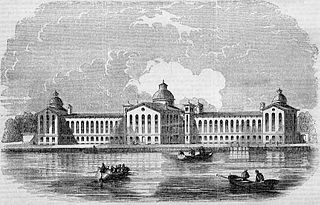
House of Refuge, Randall’s Island, New York, a wood engraving published November 1855 in Ballou’s Pictorial Drawing-Room Companion via wikimedia
Up around 103rd Street on the east side of Manhattan, you can cross a bridge over the East River to Randall’s Island. It used to be separate from Wards Island, but in the 1960s the channel between them was filled in, so now they’re two parts of one island. Today it’s mostly parkland, full of golf courses, soccer fields, baseball diamonds, playgrounds, and picnic areas, along with several public facilities. But back in the 19th century, it was a different place entirely.
In 1835, Randall’s Island was sold to the city and by mid-century, in addition to a poorhouse, orphanage, and “lunatic” asylum, it became the site of the New-York House of Refuge, the first youth detention center in the country. It housed juvenile delinquents and other kids no one knew what else to do with.
This was before day care, playgrounds, child services, or public education. A lot of kids with working parents simply had nowhere to go, and others with no parents resorted to begging, pick pocketing, or prostitution to survive. Most of the inmates were committed for vagrancy or petty crimes—their parents dubbed “indolent and worthless.”
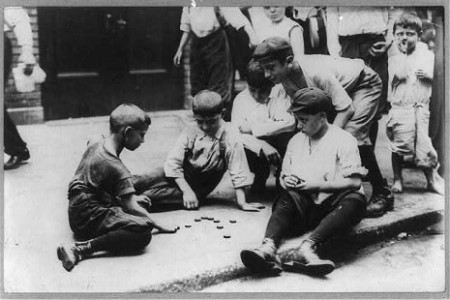
Boys playing checkers in the street, 1908 – 1915 Library of Congress LC-USZ62-71201
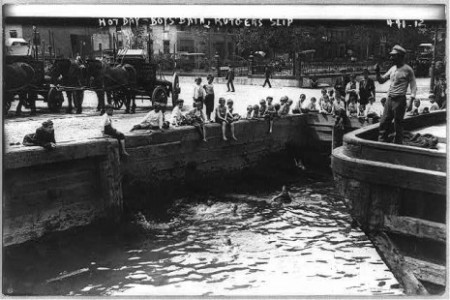
NYC Boys swimming at dock 1908 Library of Congress LC-USZ62-41531
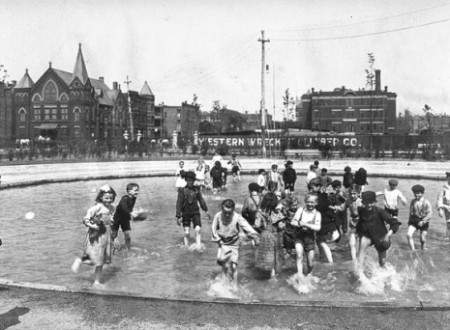
Wading pool Armour Square, Chicago 1909 via Wikimedia
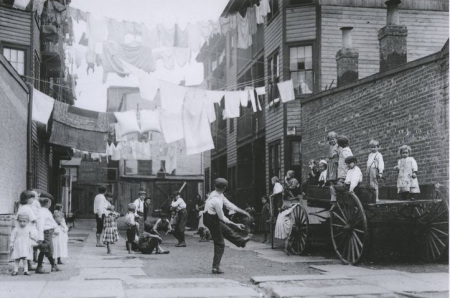
Lewis Hine, Children Playing Baseball on the Lower East Side, NYPL Digital gallery Image ID: 416562
Upon entering, the children were stripped, washed, and given uniforms, and assigned to a windowless 5 x 8 cell. They were kept occupied with a regimented system of work, religious instruction, and schooling. Male inmates produced brushes, cane chairs, brass nails, and shoes. Females sewed all the uniforms, did laundry, and performed other domestic work. In the mid 1800s, at the height of the crinoline craze, children were employed making hoop skirts.
The institution closed in 1935.
http://www.archives.nysed.gov/a/research/res_topics_ed_reform.pdf
Gotham, pp 501-2